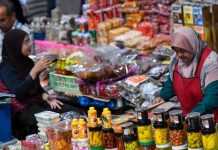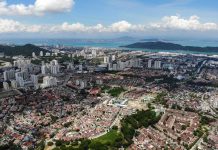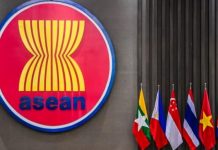Hong Kong and Singapore have announced a start to their highly anticipated two-way air travel bubble.
Flights under the agreement – which allows people to travel quarantine free between the financial hubs – will begin from May 26. The number of flights will be increased by June 26 if there aren’t further outbreaks in either city, according to Bloomberg sources.
Hong Kong and Singapore have been working on the creation of a travel corridor for months after plans for a November start were shelved due to a virus flareup in the Chinese territory. A plan to announce its revival last week was also cancelled at the last minute by the Singapore side, people familiar with the matter said at the time.
“I am happy that Hong Kong got the COVID-19 situation under control. It has been a long few months, but the conditions are now ripe again to re-launch the ATB (Air Travel Bubble)” , Mr Ong Ye Kung, Singapore’s Minister for Transport said in an emailed statement.
“Our goal remains striking a right balance between public health and travel convenience so that the public will feel assured while providing certainty,” Hong Kong’s Secretary for Commerce and Economic Development Edward Yau said.
The Hong Kong government said a discussion with Singapore on the re-launch “is at an advanced stage and the government will make announcement as soon as practicable.” Singapore’s transport ministry referred Bloomberg News to its most recent press release on the matter. Singapore last week said the two cities had not fixed a date to announce the resumption of the bubble, but “will do so once we are ready, hopefully very soon.”
While COVID-19 cases in the two places are miniscule in comparison to many countries, strict requirements for the bubble to open meant outbreaks that would be regarded as small elsewhere were enough to halt progress.
Virus flareups in Hong Kong were the main reason for the months of delays. Now, after stemming a March outbreak centred on a gym, Hong Kong has been reporting only a handful of new infections a day, or low double-digits at most. Chief Executive Carrie Lam said on April 12 that the virus was “obviously contained” in the city and encouraged more people to get vaccinated, dangling the prospect of looser rules on social distancing for those who were inoculated. Singapore has averaged two new cases per week recently.
Sporadic outbreaks also complicated a travel bubble between Australia and New Zealand. After many months in the making, a quarantine-free flight corridor between those two countries – which have largely eliminated the virus due to strict border curbs finally opened on April 19.
The Hong Kong-Singapore agreement should unleash a torrent of pent-up demand from people eager to fly overseas and potentially do business in person after more than a year of the pandemic, though it is unclear yet the limited number of flights or seats that will be made available. The desire to travel in any way possible is reflected in the popularity of so-called cruises to nowhere in Singapore and tickets selling out for gimmicky dinners on parked aircraft.
Under previous travel bubble plans, flights will be operated by Singapore Airlines and Cathay Pacific Airways. The two airlines have been hammered by COVID-19 as they don’t have domestic markets to compensate for a near-total collapse in international travel. Latest data show Cathay flew just 598 passengers a day on average in March as it operated a skeleton schedule to only 18 destinations. Singapore Airlines’ numbers are also just a tiny fraction of pre-pandemic levels.
























